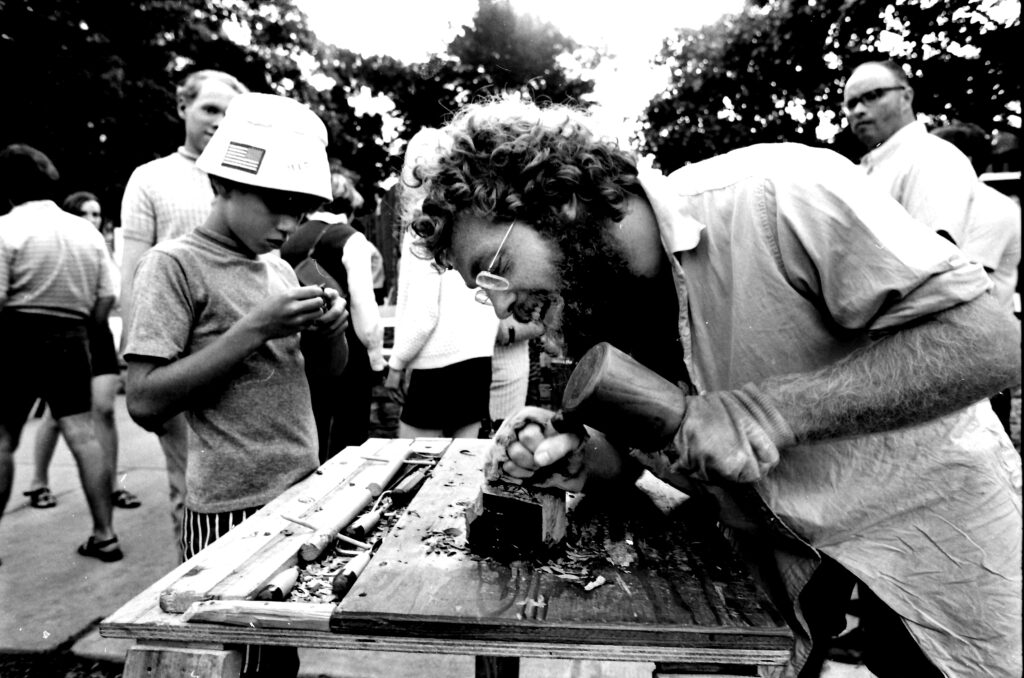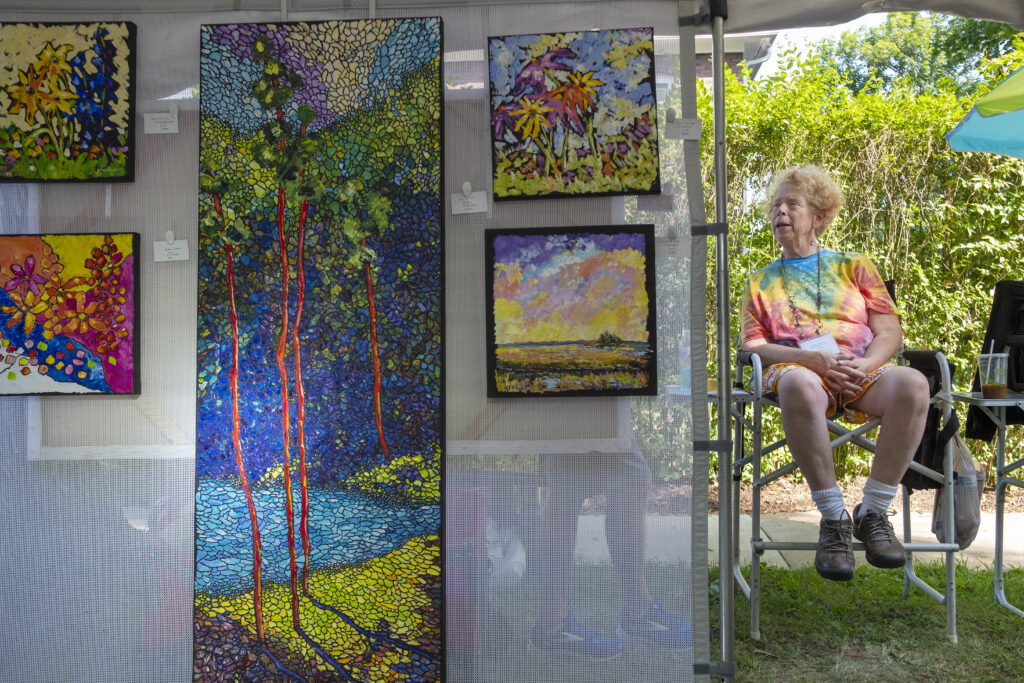The Central Pennsylvania Festival of the Arts, popularly known as “Arts Fest,” is a five-day event that draws more than 125,000 visitors to Centre County every summer. Since its founding in 1967, the festival has become one of the top arts festivals in the United States.
The idea for the festival was conceived in late 1966 by Wally Lloyd, president of the State College Area Chamber of Commerce. Lloyd thought an arts festival would boost business in downtown State College during the summer when fewer students were attending Penn State.
In January 1967, Lloyd pitched the idea to Gary Moyer, chairman of the Downtown Merchants Association, writing that the festival “would give publicity to State College, many people would come to town because of it and hence business activity should be high.” He also argued that the festival would create “a favorable image of the business community in the minds of local citizens and University students.”

Lloyd believed that “the wholehearted participation of the university is indispensable.” In April, he contacted Dr. Jules Heller, dean of Penn State’s College of Arts and Architecture. Heller agreed to be co-chairman alongside Lloyd, and six Penn State professors were tasked with putting together the festival in just two months.
In addition to funds raised by local businesses and individual donors, the project received a $2,000 grant from the newly formed Pennsylvania Council on the Arts. With a limited budget and 150 volunteers, the festival made its debut.
On July 22, 1967, the opening ceremony was marked by the memorable entrance of Gov. Raymond Shafer, who arrived by helicopter, landing on the Old Main lawn. In attendance were State College Mayor Chauncey P. Lang, Penn State President Eric A. Walker, and the festival committee. They watched as the governor’s four-year-old grandson cut the ribbons unfurling the official festival banner.
The first festival lasted nine days. The Sidewalk Sale and Exhibition featured an array of art propped up along snow-fencing that spanned “the wall” separating the Old Main lawn from downtown . Community members spontaneously contributed a range of artwork, including paintings, photographs, pottery, sculptures, and crafts of varied quality. One vendor sold kittens. There were twenty-three theater performances, two puppet shows, concerts ranging from chamber orchestras to bluegrass bands, experimental films, children’s arts and crafts, and a live program airing on WSPX-TV.
The next year’s festival had double the number of art pieces on display at the Sidewalk Sale and Exhibition. The rapid growth made it clear that more professional management was necessary. In 1971, the Sale and Exhibition became a juried show, which limited the volume of art eligible for display and sale and improved the quality of the festival.
However, the festival still faced organizational difficulties as it continued to operate through the efforts of volunteers and a single part-time staff member. Additionally, the festival still had no long-term financial plan, relying on raffles, T-shirt sales, and program advertisements.
In the early 1980s, treasurer Karen Shute established a budget and set up a business advisory committee. In 1991, Phil Waltz became managing director and outsourced the publication of the festival program to Town and Gown magazine, generating more than $300,000 in advertising revenue. Waltz also introduced a ticket system allowing visitors to support the festival through the purchase of $1 buttons, gaining access to exclusive venues in return. In 1994, the introduction of a winter event, First Night State College, allowed the festival to utilize its resources year-round while bringing in additional revenue, cementing the event’s financial stability.

Security and crowd control measures were implemented after a riot during the festival weekend in 1998. More than 1,500 revelers inflicted about $50,000 worth of damage on Beaver Avenue, several blocks away from the festival. More than twenty people were arrested.
Rick Bryant became executive director of the festival in 2005, having worked his way up from trash crew, for which he first volunteered in 1984. Today, the festival operates year-round with a full-time staff of two full-time and one part-time employees. The festival relies on the staff, a volunteer board of directors, and more than 500 volunteers to operate each year.
The festival has transformed the artistic landscape of Centre County. Several organizations and events have grown out of the festival’s success. The Central Pennsylvania Art Alliance was founded in 1968 and offers year-round art exhibitions and art classes for children and adults. Local musicians who had performed at the first festival in 1967 banded together to form the Nittany Valley Symphony, which now plays at the Eisenhower Auditorium. The State College Municipal Band originated from the festival, playing its first concert at the 1976 event.
The festival has also spawned other local festivals, including the People’s Choice Festival in Centre Hall and Heritage Days in Phillipsburg, which take place during the same week.
Today, old traditions from the first festival, including the Sidewalk Sale and Exhibition and banner contest, have endured, and new traditions have emerged. Children and Youth Day, a popular event that allows young artists to sell their work, began in 1976.
The first Arts Festival Race was a 10-mile run in 1975. The races have since expanded to offer a 5K, a 10K, and Kids Races. They are co-sponsored by the Nittany Valley Running Club and were renamed the Sue Crowe Memorial Arts Festival Races in 2006. The Italian Street Painting Festival began in 2000 and BookFest PA in 2010.
In 2020 and 2021, the festival was held virtually because of the COVID-19 pandemic. It returned in 2022.
Grey Rochon
Sources:
“About Us.” Central Pennsylvania Festival of the Arts. [Box 16] Wallis Lloyd-Festival Planning, 1967, Special Collections, Pennsylvania State University Libraries
Cheng, Vicki, Harold Goodridge, and Chris Krewson. “Riot Rocks Downtown State College,” Centre Daily Times, July 13, 1998.
Clemson, Donna Symmonds. “A Town-Gown Adventure,” The Penn Stater, October 1967.
Doom, Tracy M. “Celebrating the 50th Festival,” Town and Gown Magazine, January 5, 2021.
“Shafer Snips Strings for Arts Festival,” Centre Daily Times, July 24, 1967.
First Published: September 11, 2021
Last Modified: August 10, 2022
